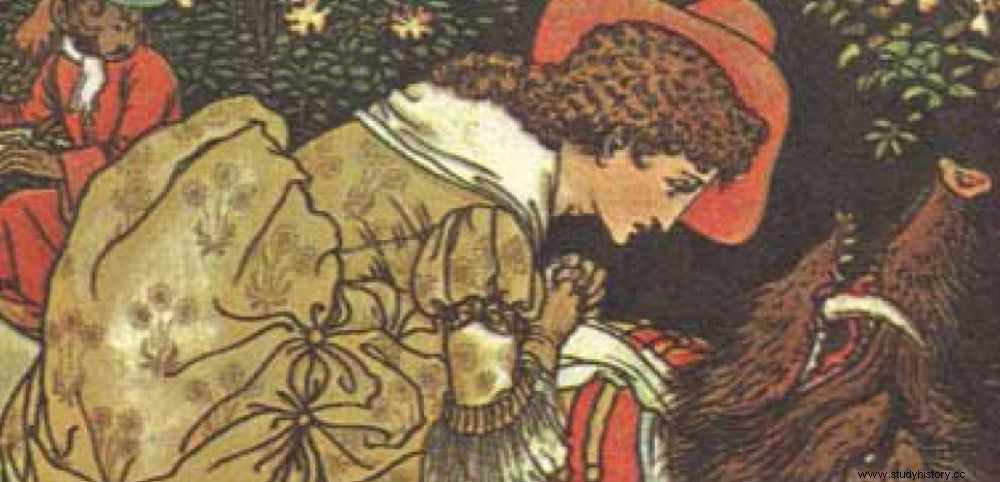 Illustration from the tale of "Beauty and the Beast", by Walter Crane, in 1874.
Illustration from the tale of "Beauty and the Beast", by Walter Crane, in 1874. STUDY. Bluebeard, Donkey Skin… Fairy tales are not just for children. They are also of interest to scientists. And two researchers had the idea of looking for the origin of these marvelous stories populated by supernatural beings. Result:some fables date back... to the Bronze Age! Beauty and the Beast could thus have been born 4000 years ago, whereas the theme of Faust, featured in The Blacksmith and the Devil, by Hans-Christian Andersen, would be 6000 years old. At least that's the conclusion of a study published in The Royal Society Open Science by two anthropologists, Sara Graça da Silva, from the University of Lisbon (Portugal), and Jamshid J. Tehrani, from the University of Durham (England).
The researchers used comparative statistical and phylogenetic methods commonly used in evolutionary biology to analyze the relationships between tales. They thus brought together 275 tales which they reduced to 76 basic structures – some tales being only variants – of which they studied the evolution within the Indo-European languages. The two specialists thus managed, by constructing a tree of tales, to establish that several of them, stemming from distant oral traditions, were much earlier than the supposed times of their appearance in literature, namely generally the time of the Revival in the 16th century. The researchers also recall that the Grimm brothers, authors of many tales in the 19th century, were themselves convinced of the Proto-Indo-European origins of certain traditional German fables that they had compiled.
A problematic methodology
A result which however leaves the historian Jean-Paul Demoule skeptical, not on the dating but on the methodology. "The idea that there are ancient narrative themes dipping into prehistory is entirely acceptable, as is the fact that these tales are passed down from generation to generation. However, genealogical structure is not the only possibly" , explains the professor of European protohistory at the University of Paris 1 and at the Institut Universitaire de France. "Having imposed a tree structure to classify tales in relation to each other, then estimating the duration of each branch, without explaining what was the means of measurement used, poses a problem. Even in genetics, this remains controversial" , continues Jean-Paul Demoule.
BACK. Referring to an earlier study from 2013, the researcher says that the results obtained by another team strongly qualify the words of Sara Graça da Silva and Jamshid J. Tehrani. By classifying 700 variants of the tale The Fairies , by Charles Perrault, found in most Indo-European "and" non-Indo-European languages (Basque, Turkish, Estonian, Finnish, or Finno-Ugric languages of Russia), this other research led to the creation of a graph from which emerged five major groups corresponding to five major geographical areas. "If the tales were transmitted from generation to generation, it is clear that they also circulated in all directions in the narrow European peninsula", adds Jean-Paul Demoule. "The reasoning of the two authors, which consisted in taking only tales in Indo-European languages may have constituted a bias ", he adds. "These tales do not only exist in Indo-European languages, they also exist elsewhere . Analyzing all the known tales, in all the languages of Europe, is a job that remains to be done" , concludes the protohistorian.
